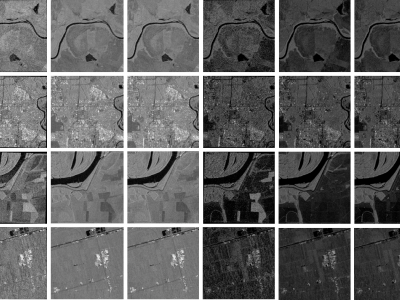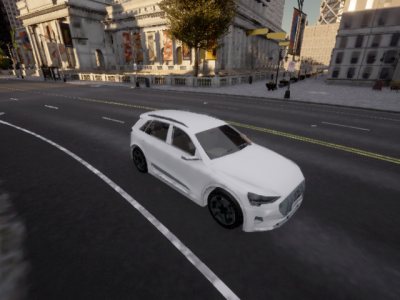Artificial Intelligence

The DRIVE dataset, developed by Staal et al. (2004), utilizes the elongated structure of vessel ridges for automatic vessel classification in the Utrecht database. It consists of 40 images (565 × 584 pixels) in JPEG format, captured at a 45° field of view, divided into 20 training and 20 testing images.
- Categories:
 54 Views
54 Views
This dataset originates from a longitudinal study examining the factors contributing to the progression of cardiovascular disease. P This particular research employs the unprocessed sequential actigraph recordings collected from an actigraph device. We evaluate sleep quality based on the two indicators as proposed in our previous study [3] which are weekly sleep quality ‘SleepQualWeek’, and sleep consistency ‘SleepCons’. SleepQualWeek and SleepCons are calculated using the pre-processed attribute set derived from the MESA dataset.
- Categories:
 161 Views
161 ViewsThe increasing prevalence of encrypted traffic in
modern networks poses significant challenges for network security,
particularly in detecting and classifying malicious activities
and application signatures. To overcome this issue, deep learning
has turned out to be a promising candidate owing to its ability
to learn complex data patterns. In this work, we present a
deep learning-based novel and robust framework for encrypted
traffic analysis (ETA) which leverages the power of Bidirectional
- Categories:
 177 Views
177 ViewsThis dataset is from "One-Stage Cascade Refinement Networks for Infrared Small Target Detection." It includes 427 infrared images and 480 targets (due to the lack of infrared sequences, SIRST also contains infrared images at a wavelength of 950 nm, in addition to shortwave and midwave infrared images). Approximately 90% of the images contain only one target, while about 10% have multiple targets (which may be overlooked in sparse/significant methods due to global unique assumptions).
- Categories:
 87 Views
87 Views
This custom dataset was created to support gait recognition research using Inertial Measurement Units (IMUs), which capture acceleration, angular velocity, and orientation data from key body locations (e.g., ankles, waist, wrists). It includes recordings from [insert number] participants performing various walking tasks under different conditions, such as normal and fast walking or navigating obstacles. The dataset provides time-series data suitable for both traditional feature-based analysis and deep learning approaches.
- Categories:
 90 Views
90 ViewsWhen training supervised deep learning models for despeckling SAR images, it is necessary to have a labeled dataset with pairs of images to be able to assess the quality of the filtering process. These pairs of images must be noisy and ground truth. The noisy images contain the speckle generated during the backscatter of the microwave signal, while the ground truth is generated through multitemporal fusion operations. In this paper, two operations are performed: mean and median.
- Categories:
 614 Views
614 Views
In the domain of gait recognition, the scarcity of non-simulated, real-world data significantly hampers the performance and applicability of recognition systems. To address this limitation, we present a comprehensive gait recognition dataset - GaitMotion- collected using built-in sensors of Android smartphones in an uncontrolled, real-world environment. This dataset captures the walking activity of 24 subjects (14 females and 10 males) above 18 years old and weighing at least 50 kg.
- Categories:
 195 Views
195 ViewsThis dataset is utilized for adversarial camouflage generation. We collect vehicle datasets in the CARLA simulation environment under 16 weather conditions. These weather conditions are generated by combining four sun altitude angles (-90°, 10°, 45°, 90°) with four fog densities (0, 25, 50, 90). Within each weather scenario, we randomly choose 16 locations for texture generation. Camera transformation values are randomly selected within specified intervals at each car location.
- Categories:
 407 Views
407 Views
This dataset offers a comprehensive mix of financial, demographic, temporal, and external factor data to help predict credit delinquency. It includes key information such as loan terms, credit balances, and effective interest rates, along with client details like salary, marital status, and profession.
In addition to tracking historical credit behavior and overdue days at different time points, the dataset incorporates critical external factors, including climate change, social unrest, and global crises like COVID-19, which may influence payment delays and financial behavior.
- Categories:
 135 Views
135 Views
A dataset has been created by recoloring three existing datasets: NeRF Synthetic, LLFF, and Mip 360. The recoloring was performed to provide ground truth for validating recoloring applications. NeRF Synthetic was recolored using Blender, while LLFF and Mip 360 were processed in Photoshop. For each scene in the datasets, 11 images were recolored, ensuring consistency across the datasets.
- Categories:
 71 Views
71 Views


